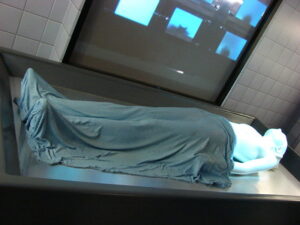Palomar College, in San Marcos is one of California’s 116 community colleges. It hasn’t had a good year. At exactly the same time the COVID-19 pandemic swept into town, the State of California swept into Palomar College and then appointed a fiscal monitor to oversee the community college budget.
After reviewing the Palomar Community College budget, the State of California warned college officials that the San Diego County institution could be broke within two years. (Not that they didn’t already know that.) But the state was keenly interested in finding out what the problem was.
Nearly a year after the State sent its own man to San Marcos, the college is doing better, financially speaking. But it is not out of the woods. In the words of the state auditors, Palomar College has a “long history of inadequate practices.”
The Board placed the College president on paid administrative leave. Madame President, it seems, pinched $1M of bond money from a library renovation project to build a “presidential suite” on the building’s top floor. Nine out of ten faculty members voted “no-confidence” in her, as well. That Board took the faculty’s vote to heart as they sent the College’s top executive packing.
Though ill-advised, the penthouse on top of the presidential library didn’t sink the community college budget. Palomar’s big problem turns out to be its personnel costs. The college’s top-heavy staff count caused its $12M financial shortfall.
Palomar College’s total compensation as a percentage of revenue still misses the mark. The college has eliminated unfunded positions, and borrowed from a retirement benefits fund. For added measure, Palomar offered early retirement incentives to reduce its payroll. The auditors also flagged the College’s tendency to rely on unrealistically positive revenue forecasts when making the community college budget.
Community college budget doesn’t reflect reality
One complaint by the auditors was that the only enrollment-based personnel adjustments the College made involved adjunct faculty. According to the auditor’s report, “…position control for budget development is nonexistent, and as a result positions that were not authorized or in the budget were often approved by the business office, adding to the overall deficit.”
Position control.
As in, the function that the Board of Trustees is supposed to perform before they authorize any new positions. Who would have thought that unrestricted administrative hiring could cause financial problems at an institution?
In response, the college recently developed a “position control” system to make sure it does not hire more people than it can afford. Despite these reforms, Palomar does not currently generate enough revenue to cover the costs of the personnel it has on staff.
Oddly enough, Palomar College – the one with the state-appointed fiscal monitor and the massive financial problems – somehow gets by with only four Vice Presidents.
Photo Credit: fatbwoy , via Flickr





















